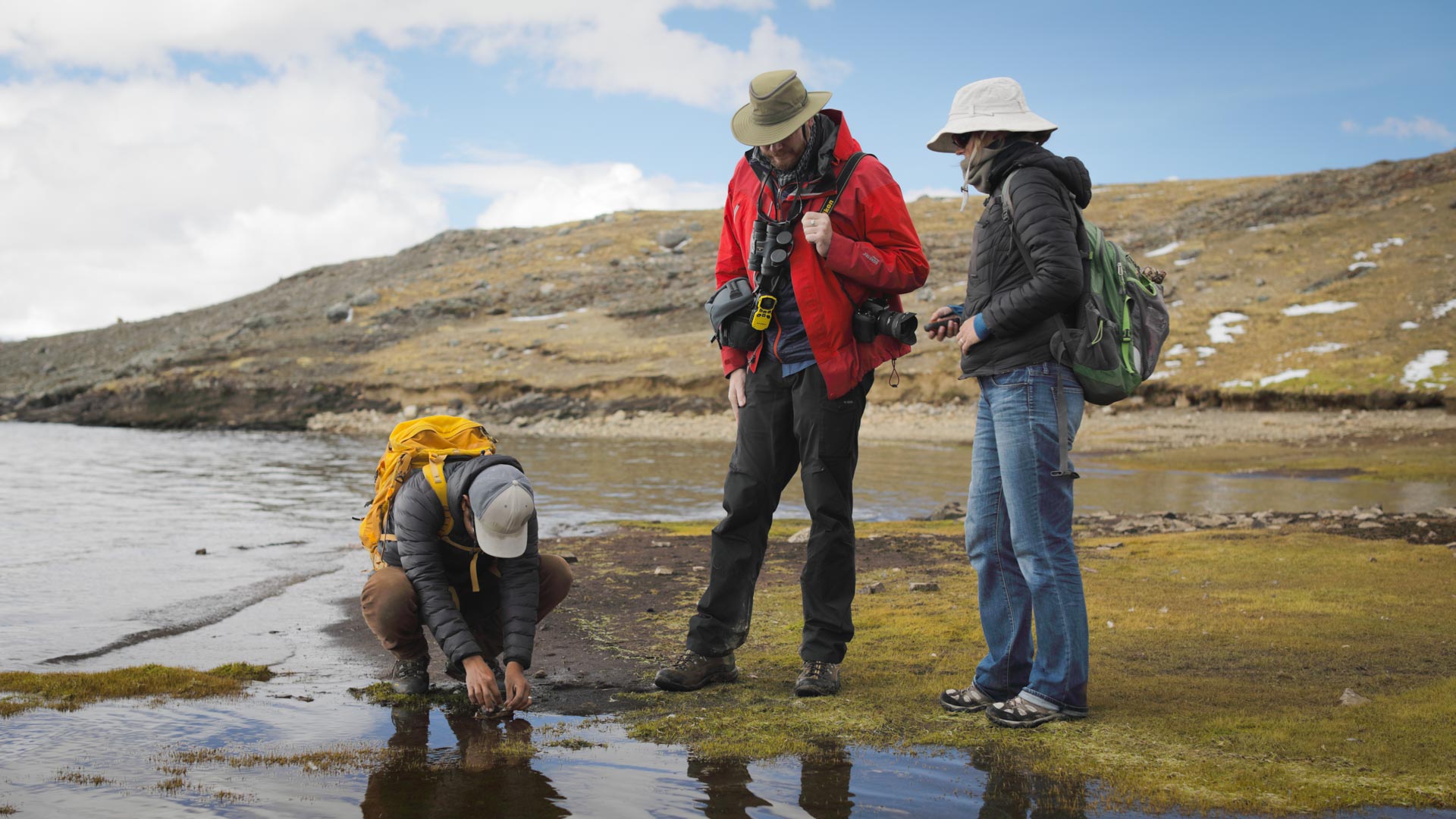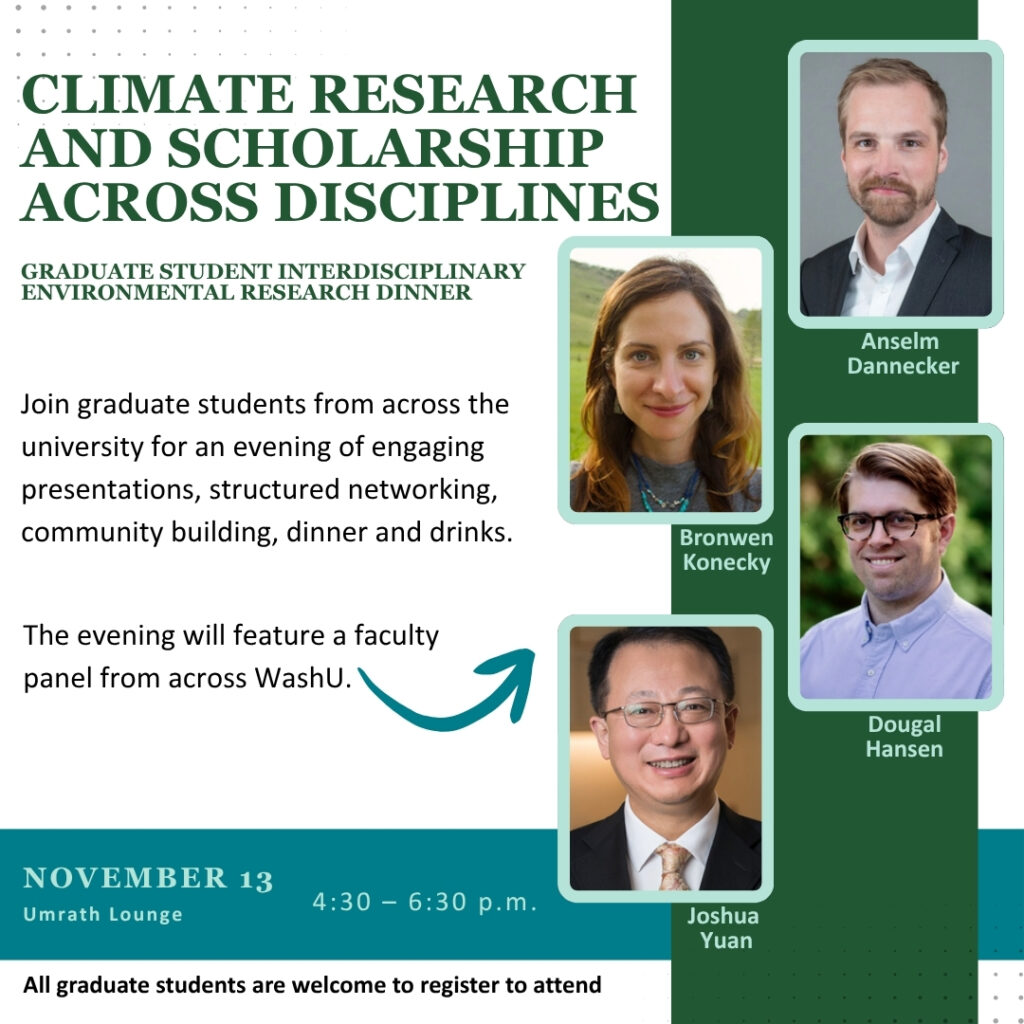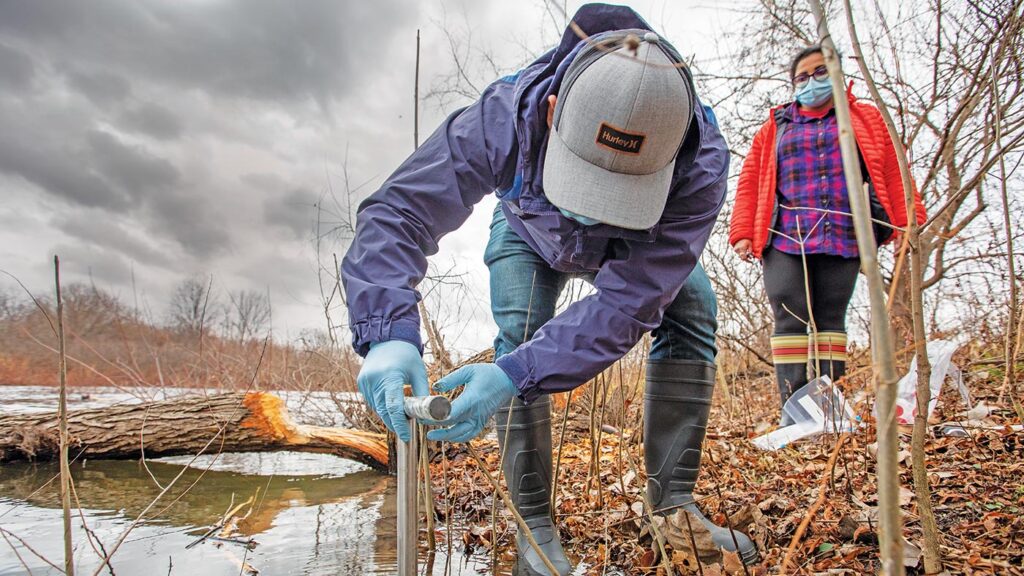
The Center for the Environment is an interdisciplinary hub of environmental research that is committed to generating transformative solutions to our deepest societal challenges including: climate change, air pollution, access to clean water, food insecurity, biodiversity loss and infectious diseases.
By the numbers
127
Center scholars
46
Proposals/Grants supported
1000+
Activity participants
150
Journal articles published
in Jan-June 2025
The Center’s mission
The center serves as a cross-cutting collaboration hub, encouraging partners, faculty and students to advance research projects in areas including biodiversity, environmental justice, planetary health, environmental solutions, and climate change. Here’s a closer look at who we are, what we do, and why it matters for our community, our region and our world.
Connect with us
Upcoming Events

Featured research & stories
Losos, Zorumski receive faculty achievement awards
Founders Day recognizes distinguished faculty, alumni, supporters
Advancing our mission: Rapid progress, big wins from strategic plan
WashU is recognizing successes while planning for the years ahead.
Can we make drinking water safer?
This WashU program taps into a simple solution using household water filters to monitor and track safety.

The WashU ecosystem
Within the WashU ecosystem of environmental research, education, and practice, the Center for the Environment serves as a connector. Much like a biodiversity corridor, we work to create space where our partners within the ecosystem and across distinct disciplines come together to address our world’s biggest environmental challenges.
In the news
Google plans to power a new data center with fossil fuels, yet release almost no emissions – here’s how its carbon capture tech works
As AI data centers spring up across the country, their energy demand and resulting greenhouse gas emissions are raising concerns.
Archaeologists May Have Found the Lost Iron City of the Silk Road in the Remote Highlands of Uzbekistan
Researchers are uncovering what they think is the metropolis of Marsmanda, an iron-making city that could rewrite the history of the famed trade route
Ancient DNA upends long-held story of cat domestication
New DNA studies show domestic cats originated in North Africa and spread later than believed, while ancient China lived alongside a different wild feline long before housecats arrived.


